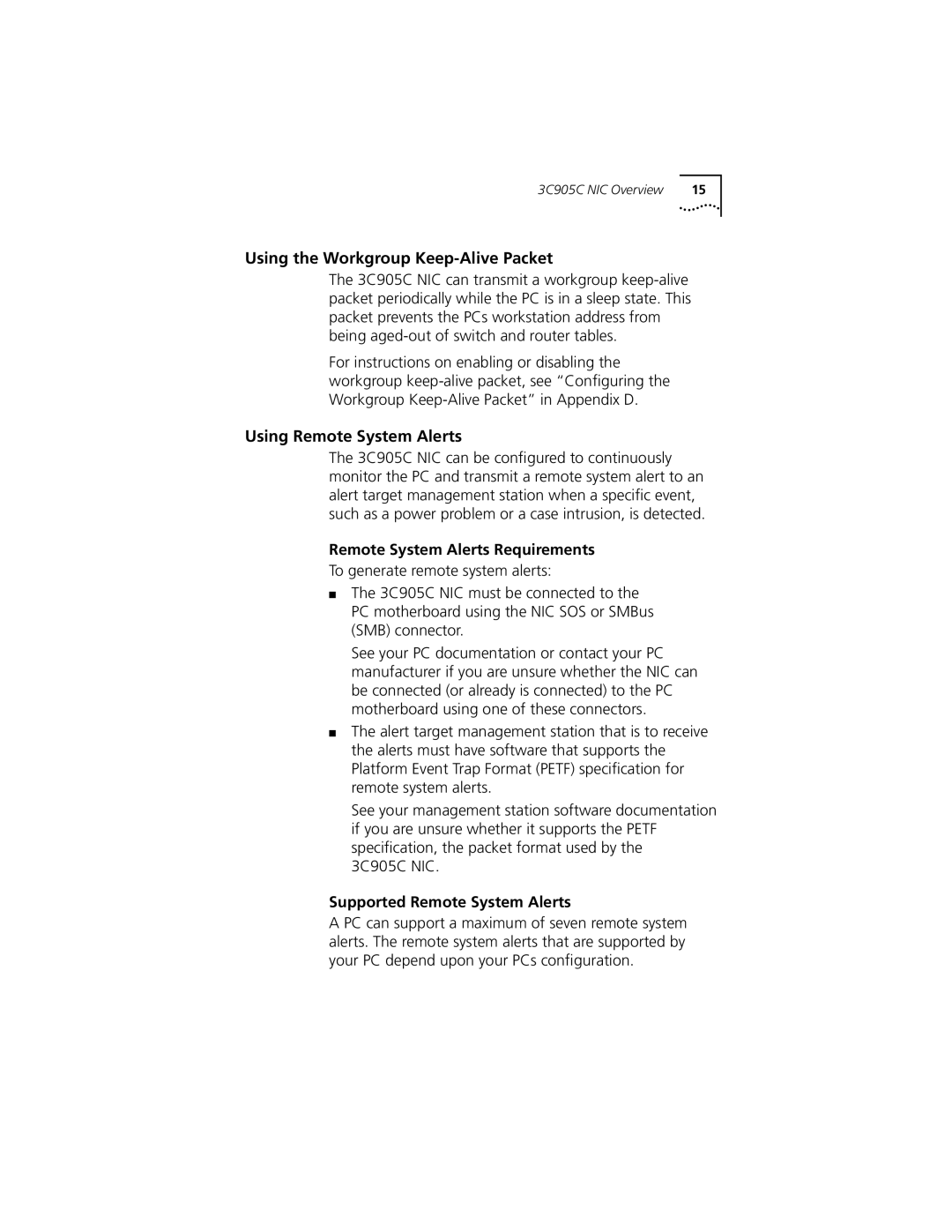3C905C NIC Overview | 15 |
Using the Workgroup Keep-Alive Packet
The 3C905C NIC can transmit a workgroup
For instructions on enabling or disabling the workgroup
Using Remote System Alerts
The 3C905C NIC can be configured to continuously monitor the PC and transmit a remote system alert to an alert target management station when a specific event, such as a power problem or a case intrusion, is detected.
Remote System Alerts Requirements
To generate remote system alerts:
■The 3C905C NIC must be connected to the PC motherboard using the NIC SOS or SMBus (SMB) connector.
See your PC documentation or contact your PC manufacturer if you are unsure whether the NIC can be connected (or already is connected) to the PC motherboard using one of these connectors.
■The alert target management station that is to receive the alerts must have software that supports the Platform Event Trap Format (PETF) specification for remote system alerts.
See your management station software documentation if you are unsure whether it supports the PETF specification, the packet format used by the 3C905C NIC.
Supported Remote System Alerts
A PC can support a maximum of seven remote system alerts. The remote system alerts that are supported by your PC depend upon your PCs configuration.
